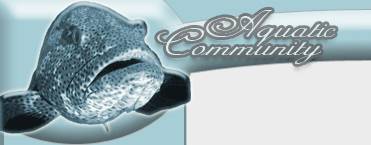Blacktail Damsel

The fish species Dascyllus melanurus is known under several different names in English, such as Blacktail Damsel, Black tail Humbug, Black-tail Humbug, Blacktail Humbug, Black-tail Dascyllus, Black-tailed Footballer, Four Striped Damselfish, and Fourstripe Damselfish.
Dascyllus melanurus has not been evaluated for the IUCN Red List of Threatened Species.
Geographical range, habitat and habits
The Blacktail Damsel is found in the Western Pacific, from Sumatra to Vanuatu and northwards to the Ryukyu Islands of Japan. Southwards, the species can be encountered down to New Caledonia and Tonga.
The Blacktail Damsel inhabits sheltered lagoons, harbours and inlets. It is a reef associated species but can also be found over fairly open substrates with outcrops of Acropora corals. It is fond of small coral heads. The Blacktail Damsel is a day-active schooling species with a depth range of 1-68 meters / 3-223 feet.
Size and appearance
The largest scientifically measured Blacktail Damsel was 8.0 cm / 3.1 in.
This fish is white and adorned with three black bars. It has black pelvic fins and transparent pectoral fins. The outer two-thirds of the tail are black, which makes this species easy to distinguish form its close relative Dascyllus aruanus.
Blacktail Damsel care
This is one of the easiest marine fishes you can keep and it can be recommended for novice marine aquarists. You should however keep in mind that it can become highly territorial and aggressive with age. If you want to keep it alone, a 15 gallon / 60 litre aquarium is large enough, but if you wish to house it with other fish as an adult you will need a much bigger aquarium.
Since the Blacktail Damsel is such a hardy fish, it is commonly used to cycle aquariums. Being added as the first fish to an aquarium will however amplify its territorial and violent nature.
This fish is very alert and greedy during feeding time and you must make sure that other creatures in the aquarium actually get any food. It is known to croak at other fish, especially when you feed the fish.
Be careful when you put your hands in the aquarium, because an adult Blacktail Damsel may bite.
The Blacktail Damsel is considered reef safe.
The recommended pH-value is 8.1-8.4 and the specific gravity should be kept in the 1.020-1.026 range. This species will do best when the water temperature is around 24-27° C / 75-81° F.
Feeding Blacktail Damsel
In the wild, the omnivore Blacktail Damsel eats a long row of different things, such as algae, amphipods, ostracods, copepods, pelagic tunicates, larval shrimps, and fish eggs. In the aquarium, it will readily accept virtually any type of food, including dry food. It is important to provide it with a varied diet that contains meaty food as well as green food. You can for instance use flakes or pellets as a base and supplement with algae / algae based food, vegetables and live, fresh or frozen animals. It is important to make the food small enough for the damsel, e.g. by chopping up shrimps and fish fillets to suitable pieces.
The Blacktail Damsel should ideally be fed several small portions of food throughout the day instead of just one or two larger meals. If you keep it in a thriving reef aquarium you can cut down on food a bit, because it will hunt for prey on its own.
Breeding Blacktail Damsel
Sexing Blacktail Damsels based on outer appearance is difficult. This species has been successfully bred in aquaria, but it is hard to feed the offspring.
Damsel Species Articles
Green Chromis aka Black-axil Chromis
Blue Green Chromis
Blue Devil
Blue Velvet Damsel
Yellowtail Damsel
Fiji Blue Devil
Striped Damsel
Domino Damsel
Clownfish Articles
Black Clownfish - Information about Black clown fish
Breeding Clownfish - A very brief describtion on how to breed clownfish
Cinnamon Clownfish - Information about Cinnamon Clownfish
Clarkii Clownfish - Information about Clarkii Clownfish
Maroon Clownfish - Information about Maroon Clownfish
Ocellaris Clownfish - Information about Ocellaris Clownfish
Percula Clownfish - An article about how to keep and breed Percula breeding.
Pink Skunk Clownfish - Information about Pink Skunk Clownfish
Saddleback Clownfish - Information about Saddleback Clownfish
Tomato Clownfish - An in deepth article about tomato clownfish.
